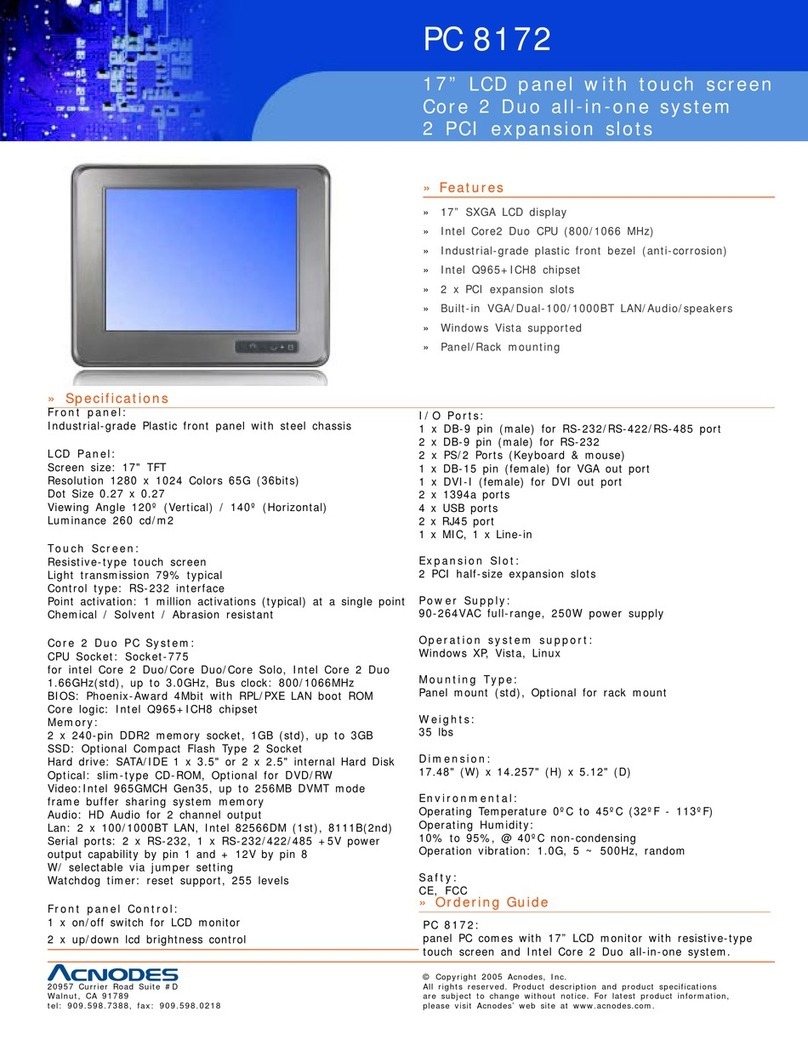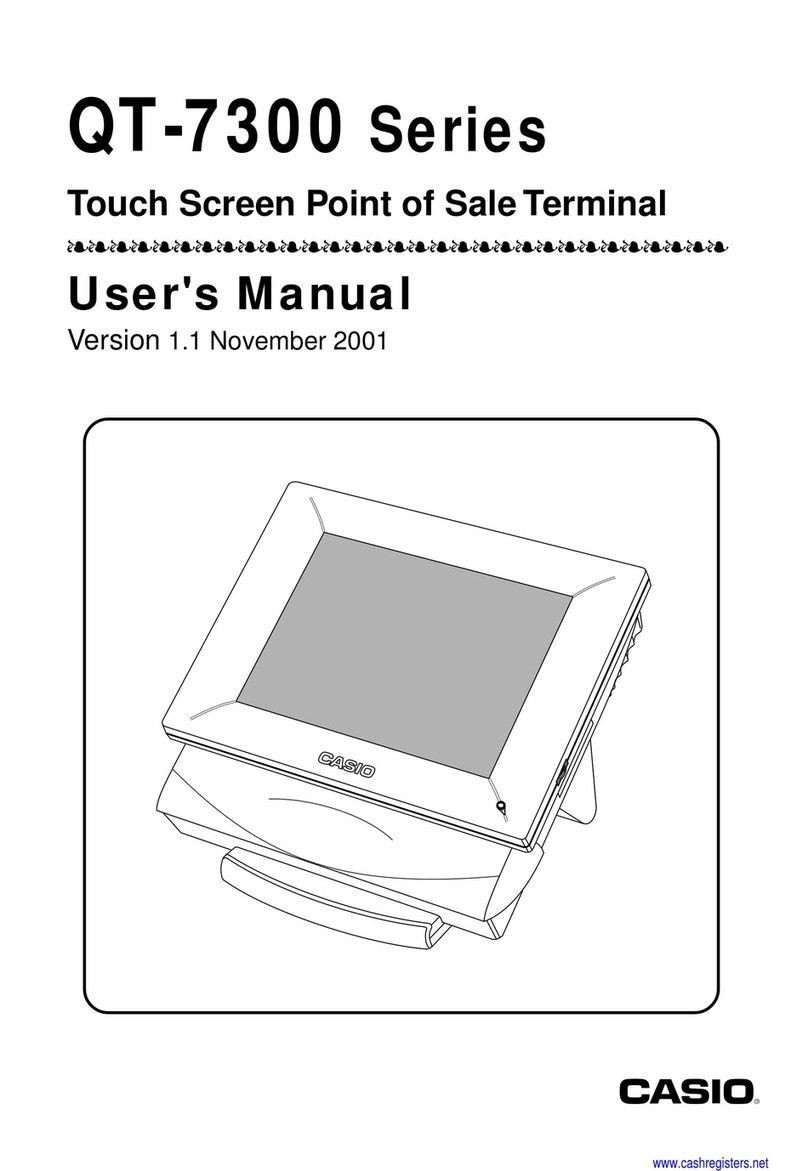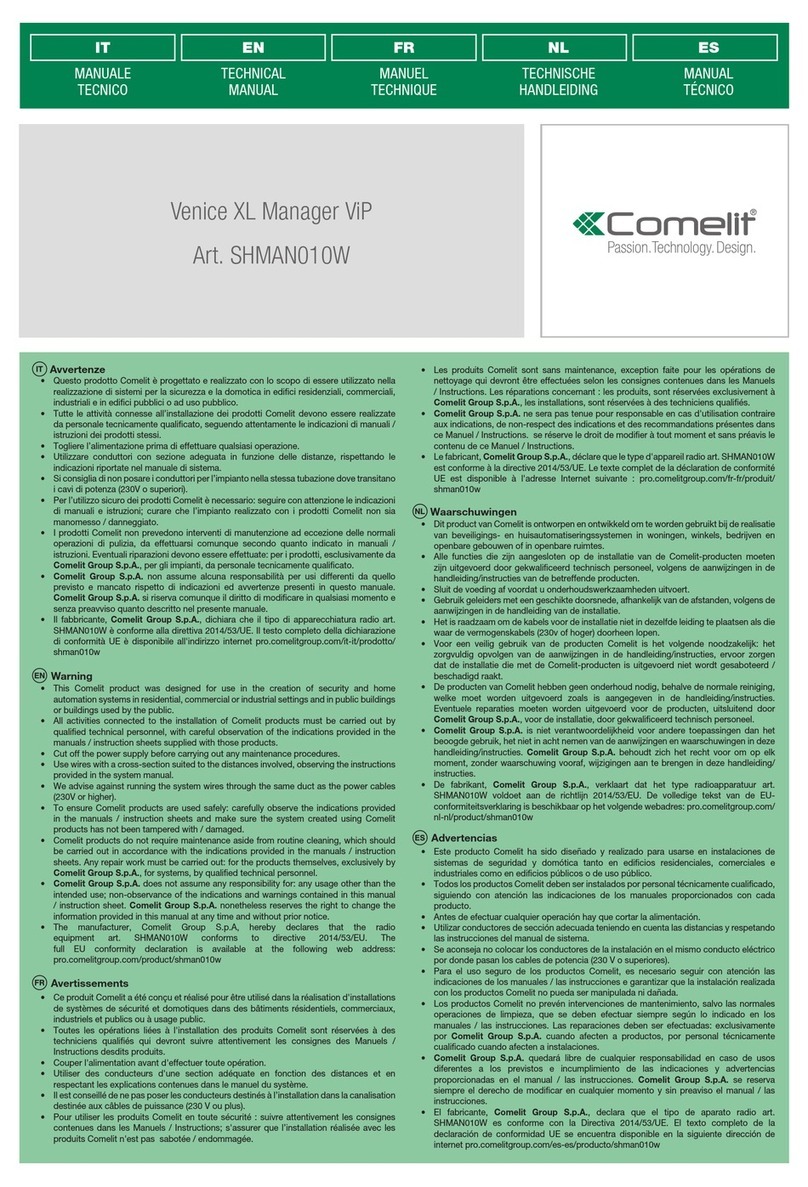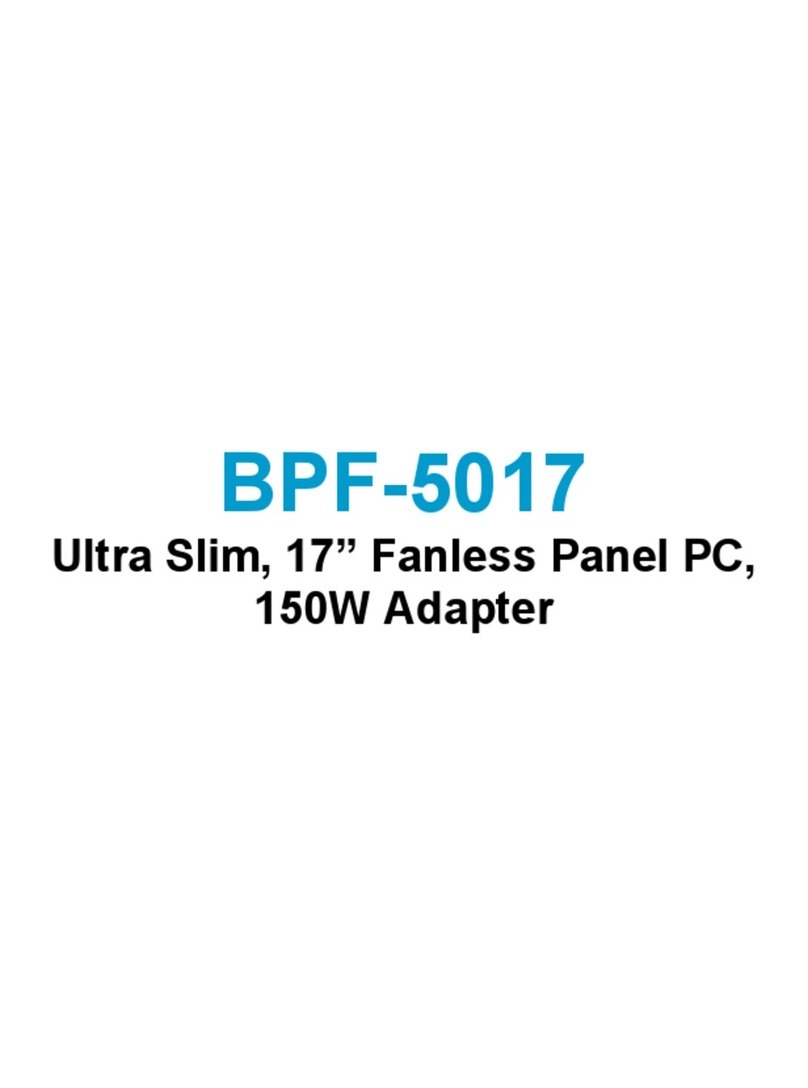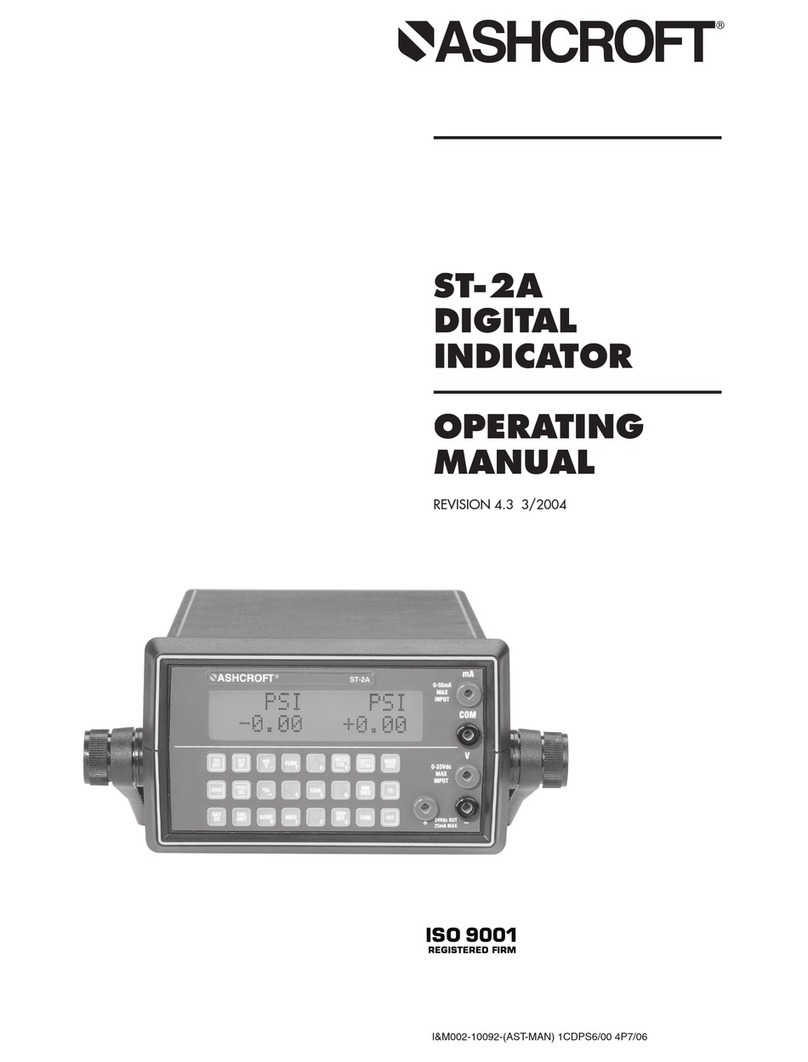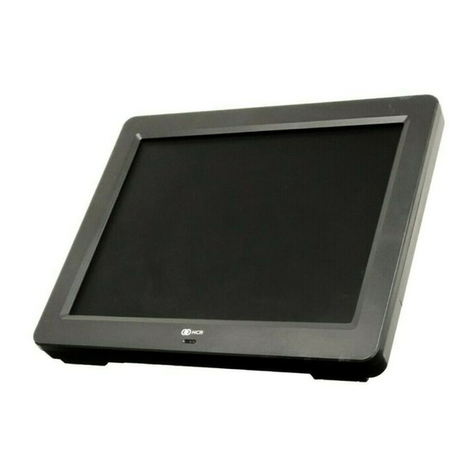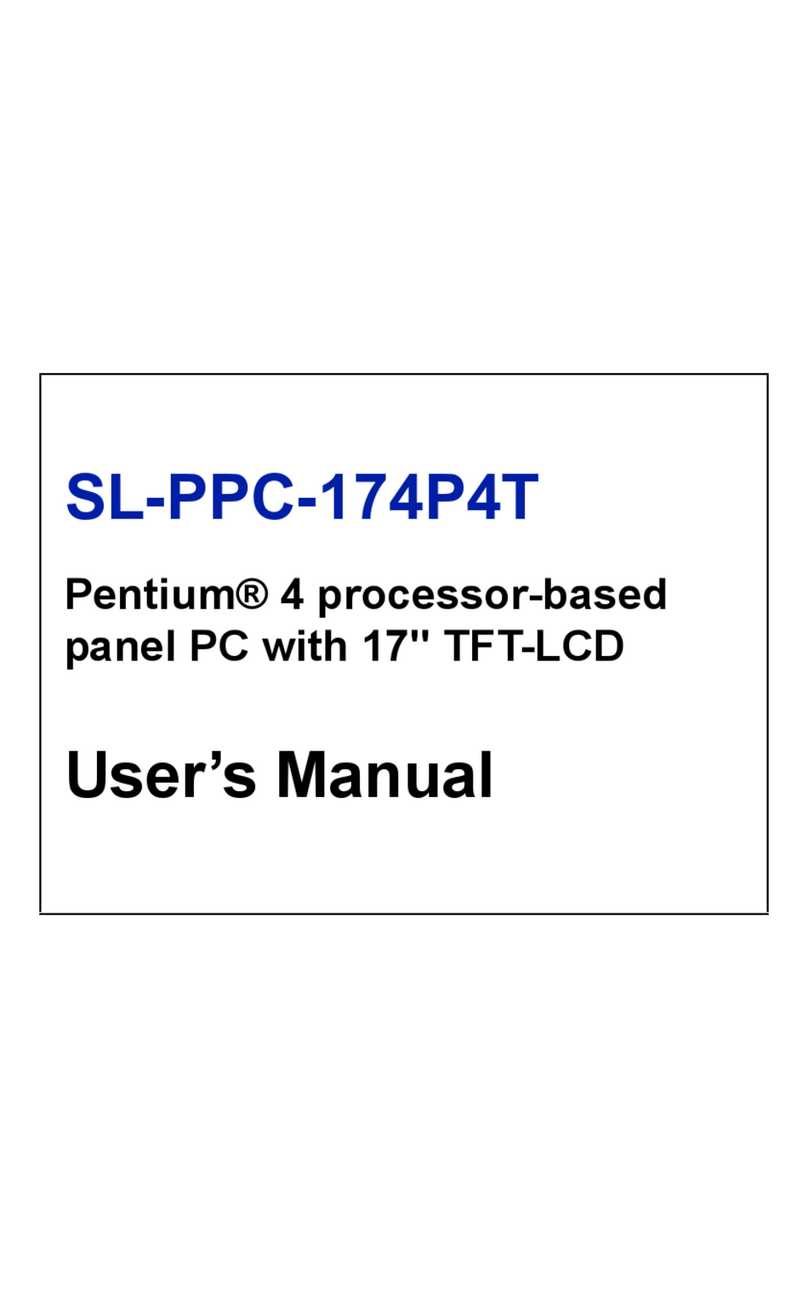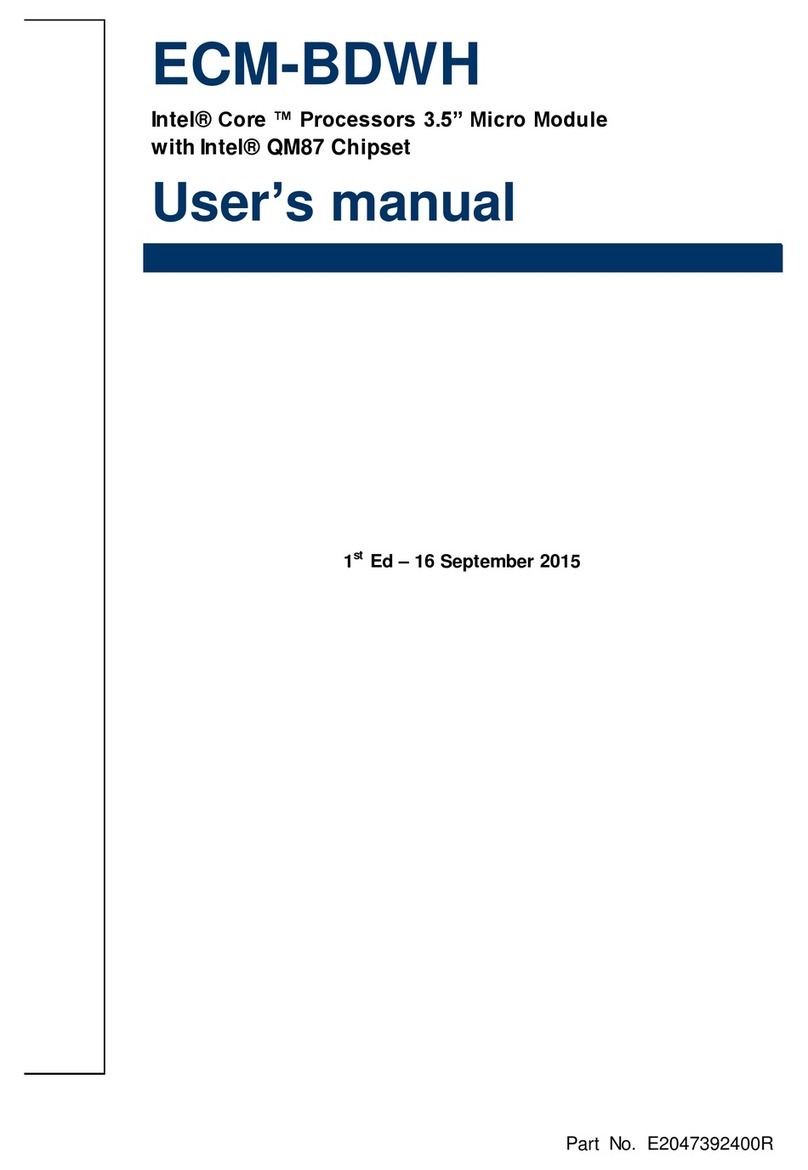BASI BBI250 User manual

BASI Instrument AB, P.O.Box 53, SE-27506 VOLLSJÖ, tel: +46 40 88009, fax: +46 40 929877
E-mail: sales@basi.se, www.basi.se
BBI250
OPERATION MANUAL
Please read this Operation Manual before mounting and operating!
Save the Manual for future references!
PROGRAMMABLE BARGRAPH INDICATOR
v4.1-2-01.14

Overview 2
BBI250 is a programmable process indicator
with an input for various linear current, voltage,
or resistive signals, a fully programmable tri-color
LED bargraph that allows setting the color
of each dot, 'dot' or 'bar' display mode as well
as customized scale, and a bright 3-digit LED
display. The device may be also equipped with
up to 2 programmable relays providing ON/OFF
control / alarm with or without pulse mode.
Mounting
♦Place BBI250 into a 42x90 mm panel cut-out.
♦Tighten it into place using the enclosed
mounting brackets.
Electro-Magnetic Interference (EMI) Issues
Important note:
A built-in RC noise
suppression circuit may
be connected in parallel
with relay contacts.
Full AC voltage isolation
may NOT be provided
when relay contacts
are open.
Small AC current
(≈1.5 mA at 230 VAC)
may still flow through
the RC circuit!
♦All signal wires must be shielded.
They must not be packaged together
with power cables!
♦Never lay the signal wires close
to inductive or capacitive noise sources,
such as relays, contactors, motors, etc.!
♦All shields have to be grounded ONLY
at one end, as closer as possible
to the indicator terminals!
♦Avoid sharing supply lines with powerful
consumers, especially with inductive loads,
switched on and off.
♦To stop unwelcome interference signals
entering through the power supply lines,
use shielded 1:1 isolation transformer!
♦Shunt all switched (not only those switched
by the indicator) inductive consumers
with special suppression networks:
RC group and varistor - for AC loads,
or diode - for DC loads.
♦If the indicator operates in a very powerful
EMI area, it has to be mounted inside
a grounded metal shielding box!

Wiring 3
Important notes:
♦Power supply must be turned off
during mounting and wiring!
♦With voltage input, use terminal A10
for range 0...10 V, and A11 – for other.
♦Connecting a potentiometer requires
excitation voltage of 5 V, 10 mA
(see 'Specifications').
Input signal wiring
Connect the input with regard to its type
(see 'Specifications') through the respective
terminals on the device back.
Voltage transmitters should be powered
ONLY by external source!
Output wiring
Connect the outputs with regard to their types
(see 'Specifications') via the respective
terminals.
Power supply wiring
Connect the right power supply voltage
for your device (see 'Specifications')
through the respective terminals.
Parameter Programming
Some parameters
are accessible only
when the respective
functionality is installed.
(see 'Specifications').
Device parameters
BBI250 is a programmable device whose
service behavior is determined by a set
of parameters. All the parameters, along
with their names, symbols, and value ranges,
are given in Table 1.

Parameter Symbol Description
Parameters of Level L3
Input Type inP Type of the input signal in case of programmable input
Point Position
Pnt Display decimal point position
Input Low ILo Display value at low limit of the input range
Input High Ihi Display value at high limit of the input range
Input Correction Icr Constant to be added to the measured input value
Gradient Grd Maximum admissible input change for 120 ms sampling period
Filter Time \t Relative time constant of the input filter
Filter Band \b Zone around the measured value, within which the filter is active
SP Limit Low %[L Set-point low limit
SP Limit High %[h Set-point high limit
Bargraph Low NLo Display value at low limit of the bargraph range
Bargraph High Nhi Display value at high limit of the bargraph range
Bargraph Color NcL Color of the bargraph LEDs
Bargraph Mode NFr Bargraph display mode
Parameters of Level L2
Direction 1 dR1 Control action direction of output K1
+Differential 1 [e1 Relay switching differential over set point for output K1
-Differential 1 me1 Relay switching differential under set point for output K1
Time On 1 ym1 ON duration of pulsed output K1
Time Off 1 y\1 OFF duration of pulsed output K1
Hold On 1 km1 Holds the output K1 reaction when being activated
Hold Off 1 k\1 Holds the output K1 reaction when being deactivated
The same 7 parameters, but with index 2- for output K2
Parameters of Level L1
Set Point 1 %[1 Set-point value of output K1
Set Point 2 %[2 Set-point value of output K2
Access-Control Paramete
r
(parameter of Hidden level)
Access
Control Level QxL Controls the access to device parameters
*With potentiometric input, after wiring the device and setting desired values to Input Low and Input High,
Input High value differ, to adjust the device to display PV correctly, set new Input High value as calculated
Input Highnew = Input Low + (Input High - Input Low)2/ (PV(100%) - Input Low)
** When Bargraph Low = Bargraph High, the bargraph is off; with Bargraph Low < Bargraph High,
the pointer goes down within Bargraph High ... Bargraph Low.

Table 1
Value Unit Notes
w10, w5,
I0, I4 - w10 (0…10 V), w5 (0...5 V; potentiometer 0.5...10 kΩ),
I0 (0…20 mA), I4 (4…20 mA)
0, 0.0, 0.00 - when indicating values with the input-signal measurement unit (ISU)
-199 ... 999 ISU
-199 ... 999 ISU *
-199 ... 999 ISU display offset value
0 … 999 ISU used for input peak filtration; value '0' cancels the filtration
0 … 999 - This parameter and the following one define a low-pass input filter.
0 … MISU M= 25% of input range
-199 ... 999 ISU These parameters keep the set points in safe limits,
preserving them from random changes.
-199 ... 999 ISU
-199 ... 999 ISU **
green, yellow, red - see 'Setting color'
bAr, dot - 'bar' - all LEDs underneath the pointer light together with it,
'dot' - only the pointer lights
coo, hEA - 'cooling' - activates over set point, 'heating' - activates under set point
0 ... 999 ISU less than (high range limit - Set Point 1)
0 ... 999 ISU less than (Set Point 1 - low range limit)
0 ... 999 sec. pulse duration; value '0' disables pulse mode
0 ... 999 sec. pause duration; value '0' disables pulse mode
0 ... 999 sec. Value '0' disables hold mode.
-199 ... 999 ISU within operating range limits Input Low ... Input High,considering
SP Limit Low(High),Input Correction, and +/-Differential 1(2)
FuL,L1, no - FuLL (full access), L1 (access only to parameters of level L1),
no (no access)
check the PV(100%) value when potentiometer slide is positioned at 100%. If PV(100%) value and
by the formula:
the bargraph pointer goes up within the Bargraph Low ... Bargraph High range, while in the opposite case,

Parameter Programming 6
- Changing
Point Position value
reflects on the real value
of all parameters
with ISU!
E.g.: changing
Point Position value
from (0) to (0.0)
would change
a Set-point value
of 100 to 10.0!!!
Setting numerical parameter value
♦Enter parameter value adjustment mode
(see 'Program Levels').
♦The whole part of the value together with
the left zeroes appears on the display,
and the rightmost digit blinks.
♦To select another digit, press .
♦The 3 rightmost digits can accept values
from 0to 9, and the leftmost digit
can also accept the values -and `.
♦To increase or decrease the blinking digit
value, use respectively or
.
♦Confirm the adjusted value by pressing
simultaneously + or + .
♦If the new value has not been confirmed
and no key has been pressed for a certain
period of time, value adjustment
automatically ceases, and the parameter
retains its initial value.
Setting symbolic parameter value
♦In parameter value adjustment mode,
use or to change the value,
and to confirm, press + or + .
♦If the new value has not been confirmed
and no key has been pressed for a certain
period of time, value adjustment
automatically ceases, and the parameter
retains its initial value.
Setting color
♦Enter Bargraph Color parameter value
adjustment mode.
♦Each of the bargraph LEDs lights in its
designated color, and the lowermost blinks.
♦To select other LED, use .
♦To change the LED color, use or .
♦To cease the adjustment, press +
or + or just wait awhile.

Program Levels 7
A PV around
the lower limit
of the bargraph
programmed range
does not visualize on it.
Programming order
♦Set full access to device parameters.
♦Adjust the parameters.
♦If needed, restrict the access again
by adjusting the Access Control Level parameter.
Access control (Hidden level)
♦Hold depressed while turning
the power supply on and until QxL appears.
♦Set access level according to Table 1.
Basic level
At power-on, TI250 enters Basic level.
At this level, the device shows on the display
the measured input value (PV) with a resolution,
according to the Point Position parameter,
and on the bargraph – the relative position of PV
within the programmed range of the bargraph.
♦If the whole part of PV cannot be entirely
displayed, the unit generates blinking
'overflow' messages (oL or -oL, depending
on PV sign). If PV is out of the bargraph
programmed range, the corresponding
endmost LED of the bargraph blinks.
♦If PV is out of the device physical operating
range, blinking symbolic messages –
<_> (under-range) or {+} (over-range) –
appear on the display, and the respective
endmost LED of the bargraph blinks.
♦Upon entering Basic level, BBI250 may display
the ini message, indicating that some time
is necessary for filter initialization.
In such case, the bargraph goes off.
♦The noi message may appear as a result
of the peak filter operation (see 'Input filtration').
In such case, the bargraph goes off.
Set-point adjustment (Level L1)
♦To enter Set Point 1 adjustment mode, press
and hold until %[1 appears on the display.
Release the key to view the set-point value.
♦To enter Set Point 2 adjustment mode, follow
the same procedure, but start with the key.

Programming Levels 8
Programming (Levels L2 and L3)
♦Enter from Basic level
by pressing and holding .
♦To access and adjust
the parameters from level L2,
release the key while L2
is displayed. To enter level L3,
release the key when L3
appears on the display.
♦Choose a parameter
using or
.
♦To enter parameter value
adjustment mode, press .
♦If no key has been pressed
for a while, the device
automatically returns
to Basic level, storing all
confirmed changes.
♦For quick exiting and saving,
use key combination +,
+, or +.
Output Control
Alarm output operation
♦The alarm outputs operate
according to the control
algorithm parameters.
♦When an error is detected
(see 'Error messaging'),
the outputs deactivate and
restore after all discrepancies
have been resolved and
programming exited.
ON/OFF control algorithm
The static characteristic
of an alarm relay controlled
by an ON/OFF algorithm
is shown on the left drawing.

Output Control 9
Output hold
For eliminating
undesirable output switches,
additional parameters
(Hold On and Hold Off)
are assigned to hold
the output reaction
for certain period of time.
Output pulse mode
When an output is activated
by the control algorithm, it
can either stay ON or pulse
depending on Time On and
Time Off parameter values.
Error Messaging
Message Parameters Error type
FAL all incorrect memory
W 1 Grd out of range
W 2, W 3 \t, \b out of range
W 4, W 5 %[L,%[h out of input range *
W 6 %[L,%[h %[L> %[h
W11, W21 ym1,ym2 out of range
W12, W22 y\1, y\2 out of range
W13, W23 km1,km2 out of range
W14, W24 k\1,k\2 out of range
W15, W25 [e1,[e2 out of range
W16, W26 me1,me2 out of range
W17, W27 %[1,%[2 outside %[L...%[h
W18, W28 %[x-mexunder input range *
W19, W29 %[x +[exover input range *
* Within range limits Input Low ... Input High
considering Input Correction.
♦In some cases, BBI250
finds discrepancies
in parameter values
that must be resolved
before operating
at Basic level.
♦The device indicates
such kind of problems
by displaying
error messages
as given on the left.
♦If FAL appears
on the display,
try debugging
by turning
the power off/on.
♦If the problem persists,
press and hold
to restore the default
(factory) settings.

Input Filtration 10
Peak filter
This filter is intended for eliminating
pulse spikes (peaks), which can appear
in the input signal, in the following way:
♦BBI250 measures the input signal value
every 120 ms (sample time).
♦The measured values are compared
subsequently. The filter checks
the difference between the last
2 samples. If it does not exceed
Gradient value, the device accepts
the signal as normal.
♦If the last measured value differs
from the previous one by more than
the Gradient value, the filter output
is held until the device determines
a presence of a normal signal.
It is possible only if the input signal
has not been changed with more than the
Gradient value for 4 subsequent samples.
♦If the device has not determined
a normal signal for 20 subsequent
samples, noi appears on the display
(see 'Basic level').
Low-pass filter
This first-order filter acts ONLY within
a certain band around filter output value.
This has been designed to cut periodic
noises outside the communication signal
spectrum.
♦Filter operation is defined by two
parameters:
Filter Time (defines filter time constant) and
Filter Band (defines filter active band around
filter output value).
♦If the newly measured value differs
from the filter output by more than
Filter Band, the filter resets
with a new initial output value
(newly measured value).

Declaration of Conformity 11
The undersigned hereby declares,
on behalf of BASI.,
that this device has been manufactured
in compliance with standards
EN 61000, EN 61010, and EN 61326,
and meets the requirements of Directives
2004/108/EC, 2006/95/EC, and 2011/65/EU.
Bengt Steèn, CEO
BASI Instrument AB.
Waste Disposal
Do not dispose of
electronic devices
together with
household waste
material!
If disposed of within European Union,
this product should be treated
and recycled in accordance with the laws
of your jurisdiction implementing
the WEEE Directive 2002/96
on the Waste Electrical and Electronic
Equipment.

Specifications 12
Input
Outputs:
Electromechanical relay
SSR
MOS gate
Output for external SSR
- K1
- K2
Power Supply
Excitation Voltage (Vaux)
Consumption
Measurement Error
Temperature Drift
Ambient Temperature / Humidity
Protection Class: front / terminals
programmable,
on request (see device label)
up to 2
5A/250VAC with NO/NC contact
1A/250VAC
0.1A/60V, optically isolated
5...24 VDC, 30 mA
relay, SSR, MOS gate, for ext. SSR
relay, SSR, MOS gate, for ext. SSR
230 VAC, 90…250 V,
24 VDC, 12...24 V,
.............................................
10...30 V, 30 mA, 5 VDC, 10 mA, stabilized,
.............................................
less than 10 VA
≤±0.3% from span
≤±0,02% from span for 1 °C
-10…65 °C / 0…85% RH, non-condensing
IP65, IP54 / IP20
Warranty and Support
………………………….
serial number
………………………….
manufacturing date
QC check mark …….……(passed)
(stamp)
BASI Instrument AB
P.O.Box 53
PSE-275 06 VOLLSJÖ.. SWEDEN
tel: +46 40 88009
fax: +46 40 929877
E-mail: sales@basi.se
QD-8.2.4-WC
Warranty
BASI warrants this product
to be free from defects in materials
and workmanship for 2 years. If your unit
is found to be defective within that time,
we will promptly repair or replace it.
This warranty does not cover accidental
damage, wear or tear, or consequential
or incidental loss. This warranty
does not cover any defects caused
by wrong transportation, storage, installation,
or operating (see 'Specifications').
Technical support
In the unlikely event that you encounter
a problem with your BASI device,
please call your local dealer or contact
directly our support team.
Table of contents
Popular Touch Panel manuals by other brands
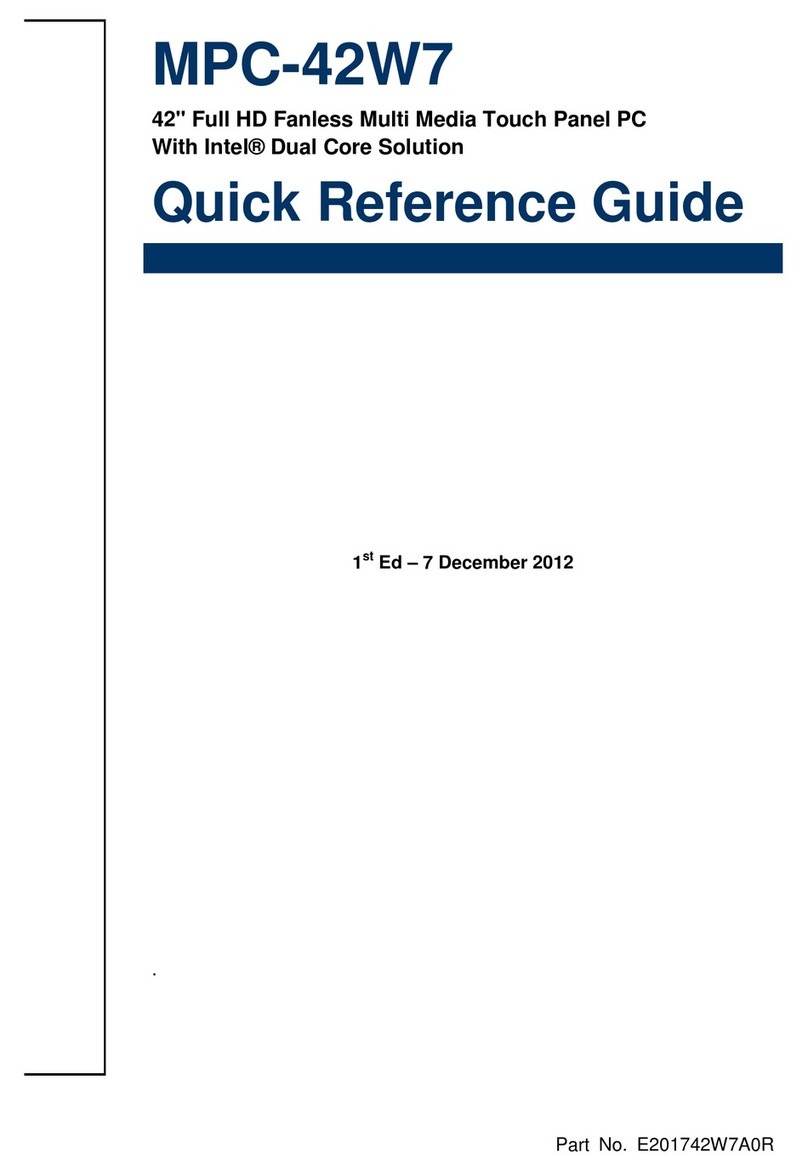
Avalue Technology
Avalue Technology MPC-42W7 Quick reference guide
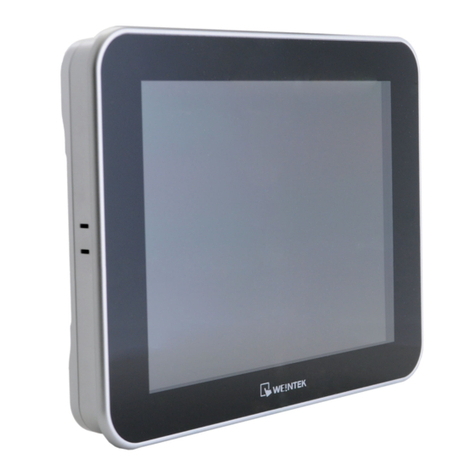
weintek
weintek cMT-iV5 series Installation instruction
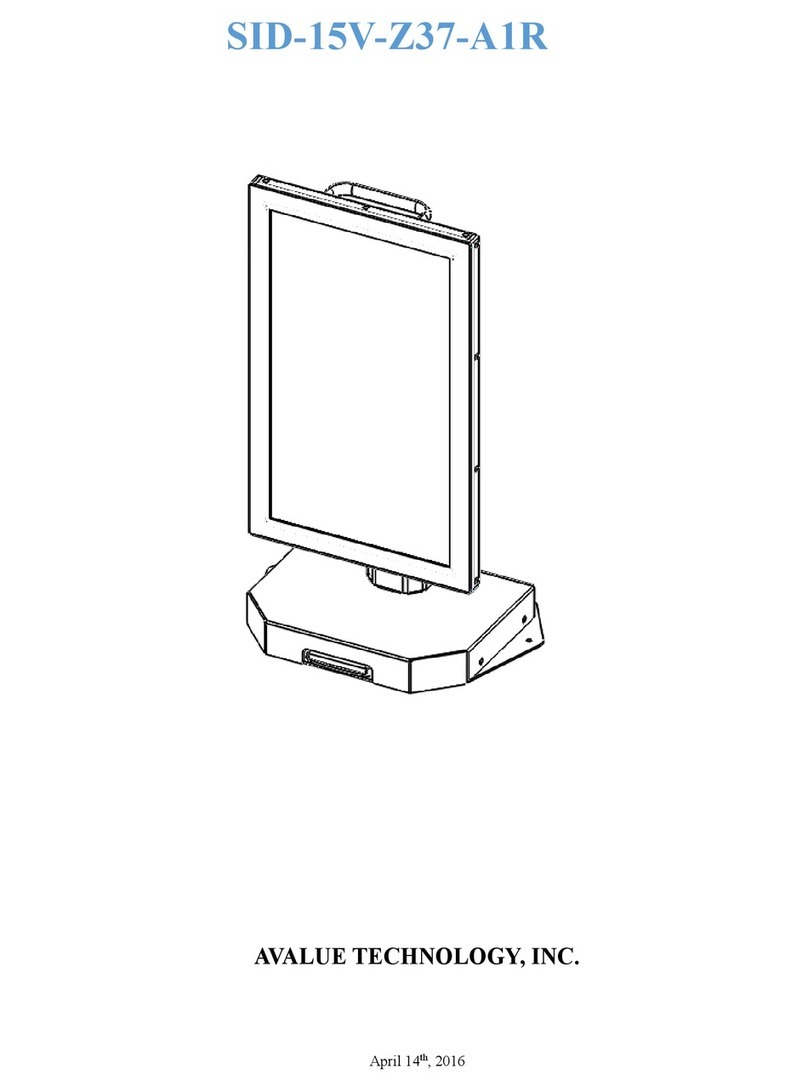
Avalue Technology
Avalue Technology SID-15V-Z37-A1R user manual
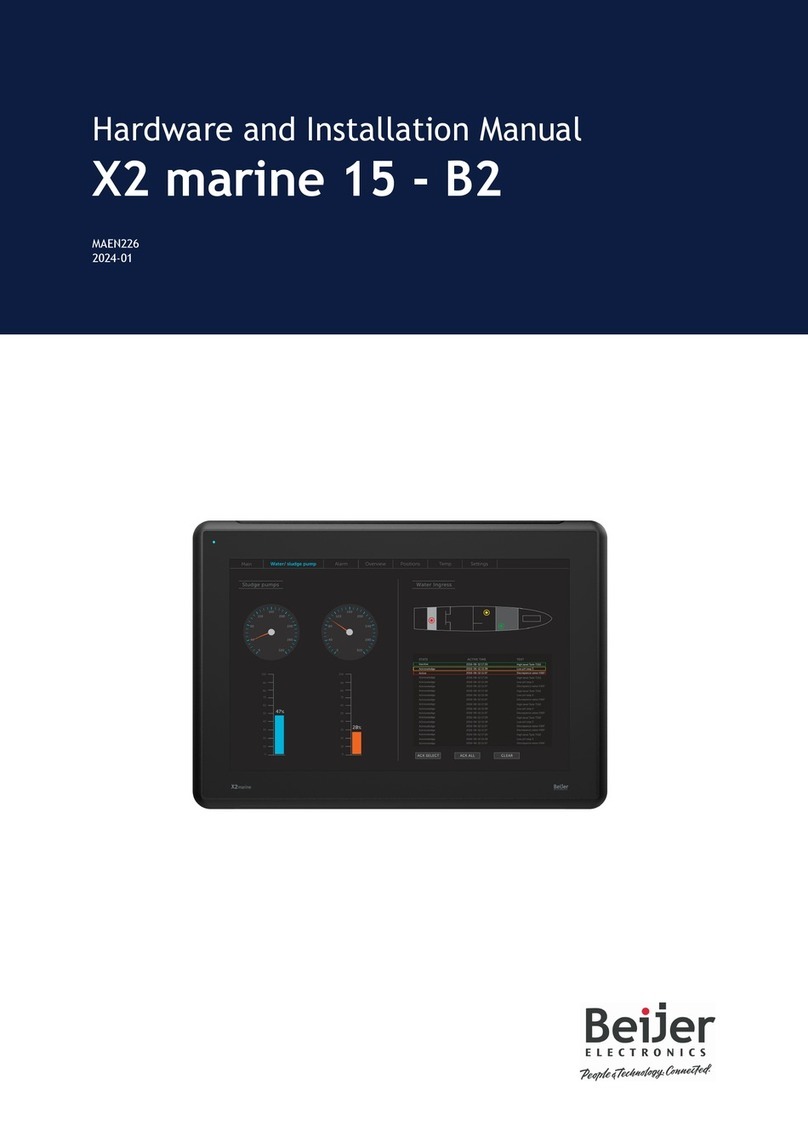
Beijer Electronics
Beijer Electronics X2 marine 15 - B2 Hardware and installation manual
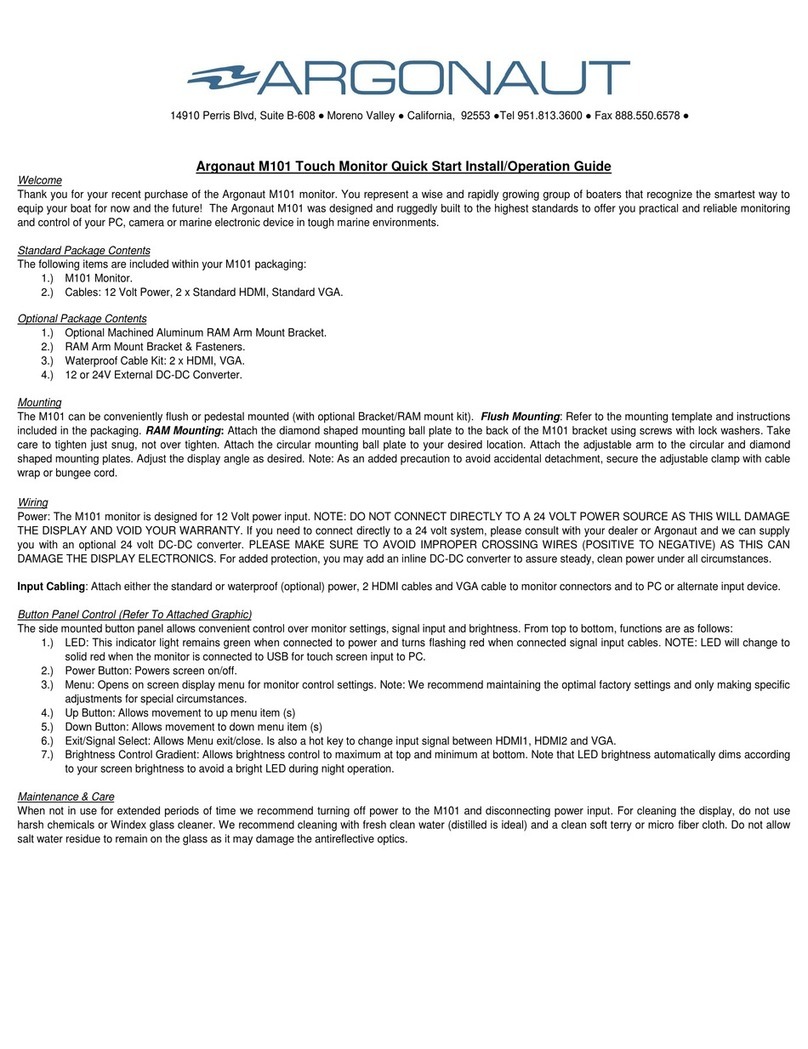
Argonaut
Argonaut M101 Quick installation & operation guide

Beha-Amprobe
Beha-Amprobe DR 100 instruction manual
